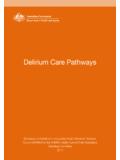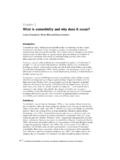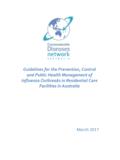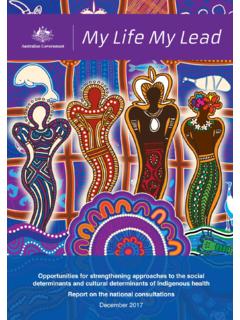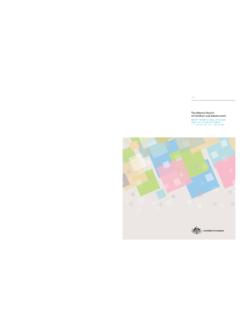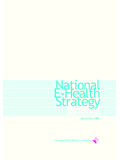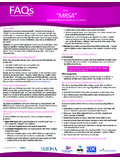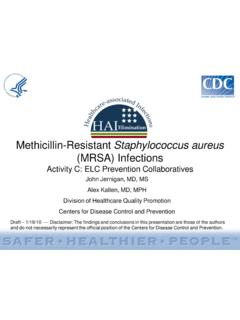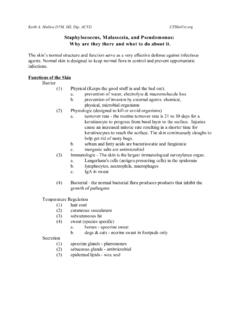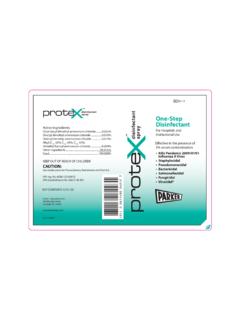Transcription of Staphylococcus aureus ustrAliAn G AntimicrobiAl …
1 E244 CDI Vol 40 No 2 2016 Annual reports Australian Staphylococcus aureus Sepsis Outcome Programme, 2014 AbstractFrom 1 January to 31 December 2014, 27 institu-tions around Australia participated in the Australian Staphylococcal Sepsis Outcome Programme (ASSOP). The aim of ASSOP 2014 was to deter-mine the proportion of Staphylococcus aureus bacteraemia (SAB) isolates in Australia that are AntimicrobiAl resistant , with particular emphasis on susceptibility to methicillin and to characterise the molecular epidemiology of the isolates. Overall, of the 2,206 SAB episodes were methicillin resistant , which was significantly higher than that reported in most European countries.
2 The 30-day all-cause mortality associated with methicillin - resistant SAB was , which was significantly higher than the mortality associated with methicillin -sensitive SAB (P< ). With the exception of the -lactams and erythromycin, AntimicrobiAl resistance in methicillin -sensitive S. aureus remains rare. However in addition to the -lactams, approximately 50% of methicillin -resist-ant S. aureus (MRSA) were resistant to erythromy-cin and ciprofloxacin and approximately 15% were resistant to co-trimoxazole, tetracycline and gen-tamicin. When applying the European Committee on AntimicrobiAl Susceptibility Testing breakpoints, teicoplanin resistance was detected in 2 S.
3 aureus isolates. Resistance was not detected for vancomy-cin or linezolid. Resistance to non-beta-lactam anti-microbials was largely attributable to 2 healthcare-associated MRSA clones; ST22-IV [2B] (EMRSA-15) and ST239-III [3A] (Aus-2/3 EMRSA). ST22-IV [2B] (EMRSA-15) has become the predominant health-care associated clone in Australia. Sixty per cent of methicillin - resistant SAB were due to community-associated (CA) clones. Although polyclonal, almost 44% of community-associated clones were characterised as ST93-IV [2B] (Queensland CA-MRSA) and ST1-IV [2B] (WA1). CA-MRSA, in particular the ST45-V [5C2&5] (WA84) clone, has acquired multiple AntimicrobiAl resistance determi-nants including ciprofloxacin, erythromycin, clinda-mycin, gentamicin and tetracycline.
4 As CA-MRSA is well established in the Australian community it is important that AntimicrobiAl resistance patterns in community and healthcare-associated SAB is monitored as this information will guide therapeu-tic practices in treating S. aureus sepsis. Commun Dis Intell 2016;40(2):E244 : Australian Group on AntimicrobiAl Resistance, AntimicrobiAl resistance surveillance; Staphylococcus aureus , methicillin sensitive, methicillin resistant , bacteraemiaIntroductionGlobally, Staphylococcus aureus is one of the most frequent causes of hospital-acquired and commu-nity-acquired blood stream Although there are a wide variety of manifestations of seri-ous invasive infection caused by S.
5 aureus , in the great majority of these cases the organism can be detected in blood cultures. Therefore, SAB is considered a very useful marker for serious invasive prolonged AntimicrobiAl therapy and prompt source control are used to treat SAB,3 mortality ranges from as low as to as high as 40%.4 6 Mortality rates however, are known to vary significantly with patient age, clinical manifesta-tion, co-morbidities and methicillin , 8 A prospective study of SAB conducted in 27 labo-ratories in Australia and New Zealand found a 30-day all-cause mortality of On univari-ate analysis, increased mortality was significantly associated with older age, European ethnicity, methicillin resistance, infections not originating from a medical device, sepsis syndrome, pneumo-nia/empyema and treatment with a glycopeptide or other non- -lactam Australian Group on AntimicrobiAl Resistance (AGAR)
6 , a network of laboratories located across Australia, commenced surveillance of antimicro-bial resistance in S. aureus in In 2013 AGAR commenced the Australian Staphylococcal Sepsis Outcome Programme (ASSOP).11 The primary objective of ASSOP 2014 was to determine the proportion of SAB isolates demonstrating antimi-crobial resistance with particular emphasis on:AustrAli An Group on AntimicrobiAl resistAnce AustrAli An Staphylococcus aureus sepsis outcome proGrAmme AnnuAl report, 2014 Geoffrey W Coombs, Denise A Daley, Yung Thin Lee, Julie C Pearson, J Owen Robinson, Graeme R Nimmo, Peter Collignon, Benjamin P Howden, Jan M Bell, John D Turnidge for the Australian Group on AntimicrobiAl ResistanceAustralian Staphylococcus aureus Sepsis Outcome Programme, 2014 CDI Vol 40 No 2 2016 E245 Australian Staphylococcus aureus Sepsis Outcome Programme, 2014 Annual reports1.
7 Assessing susceptibility to methicillin2. molecular epidemiology of methicillin resistant S. aureus (MRSA).MethodsTwenty-seven laboratories from all 8 Australian states and territories participated in the program in 1 January to 31 December 2014, the 27 labo-ratories collected all S. aureus isolated from blood cultures. S. aureus with the same AntimicrobiAl susceptibility profiles isolated from a patient s blood culture within 14 days of the first positive culture were excluded. A new S. aureus sepsis episode in the same patient was recorded if it was identified by a culture of blood collected more than 14 days after the last positive culture.
8 Data were collected on age, sex, date of admission and discharge (if admitted), and mortality at 30 days from date of first positive blood culture. To avoid interpretive bias, no attempt was made to assign attributable mortality. Each episode of bacterae-mia was designated healthcare onset if the first positive blood culture(s) in an episode were col-lected > 48 hours after testingParticipating laboratories performed AntimicrobiAl susceptibility testing using the Vitek2 (bio-M rieux, France) or the Phoenix (BD, USA) automated microbiology systems according to the manufacturer s instructions.
9 S. aureus was identi-fied by morphology and positive results of at least one of the following tests: Vitek MS (bioM rieux, France), matrix-assisted laser desorption ioniza-tion biotyper (Bruker Daltonics, Germany), slide coagulase, tube coagulase, appropriate growth on chromogenic agar and demonstration of deoxyri-bonuclease production. Additional tests such as fermentation of mannitol, growth on mannitol-salt agar or polymerase chain reaction (PCR) for the presence of the nuc gene may have been performed for conf inhibitory concentration (MIC) data and isolates were referred to the Australian Collaborating Centre for Enterococcus and Staphylococcus Species (ACCESS) Typing and Research.
10 Clinical and Laboratory Standards Institute (CLSI)12 and European Committee on AntimicrobiAl Susceptibility Testing (EUCAST)13 breakpoints were utilised for inter-pretation. Isolates with a resistant or an interme-diate category were classified as non-susceptible. Linezolid and daptomycin non-susceptible iso-lates were retested by Etest (bioM rieux) using the Mueller-Hinton agar recommended by the manufacturer. S. aureus ATCC 29213 was used as the control strain. High level mupirocin resist-ance was determined using a mupirocin 200 g disk according to CLSI guidelines on all isolates with a mupirocin MIC > 8 mg/L by Vitek2 or > 256 mg/L by Phoenix.
